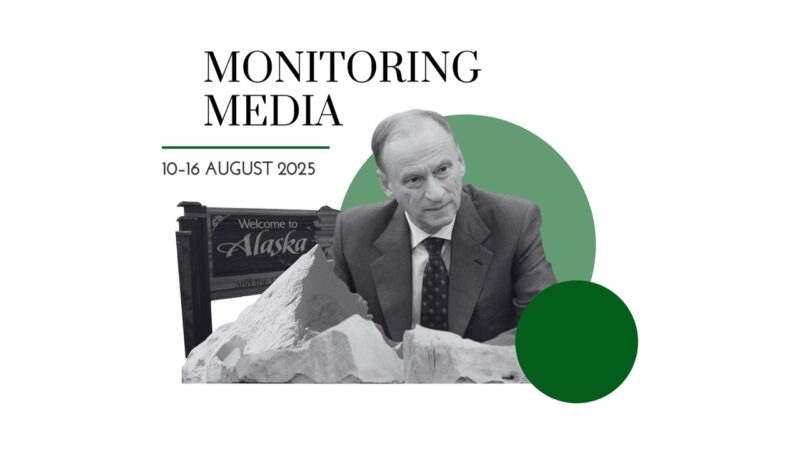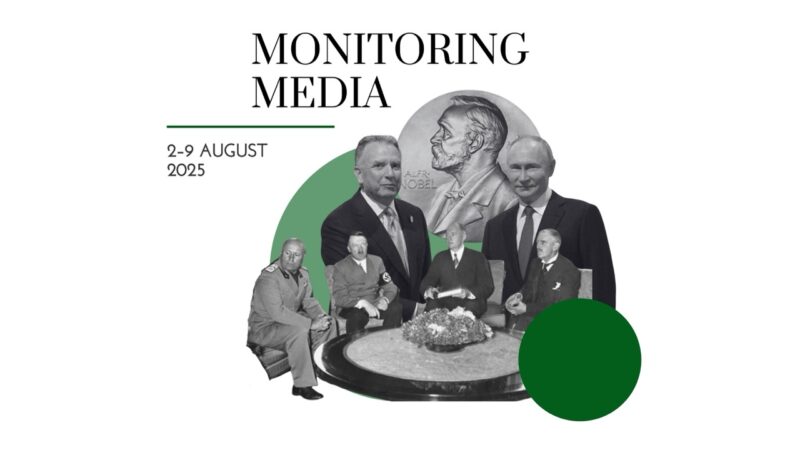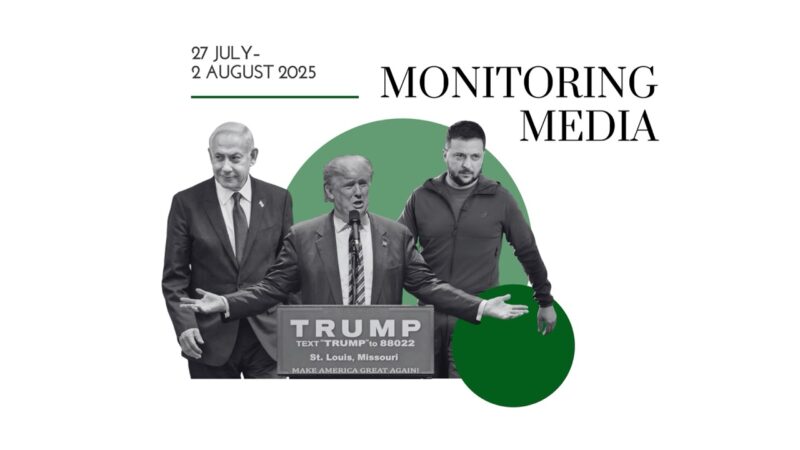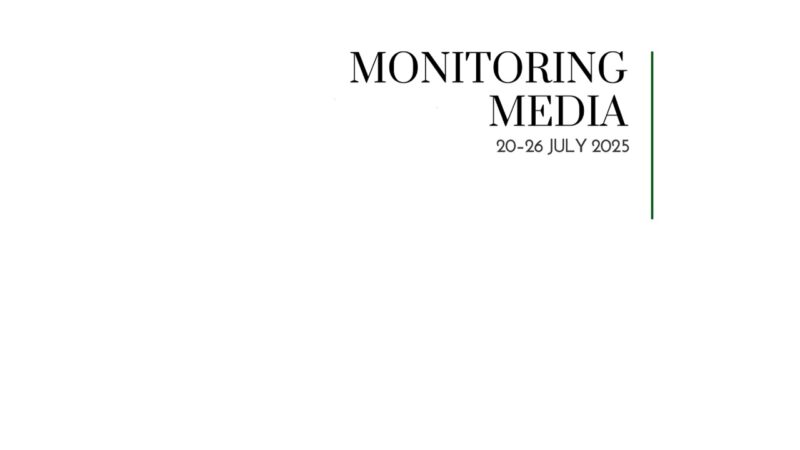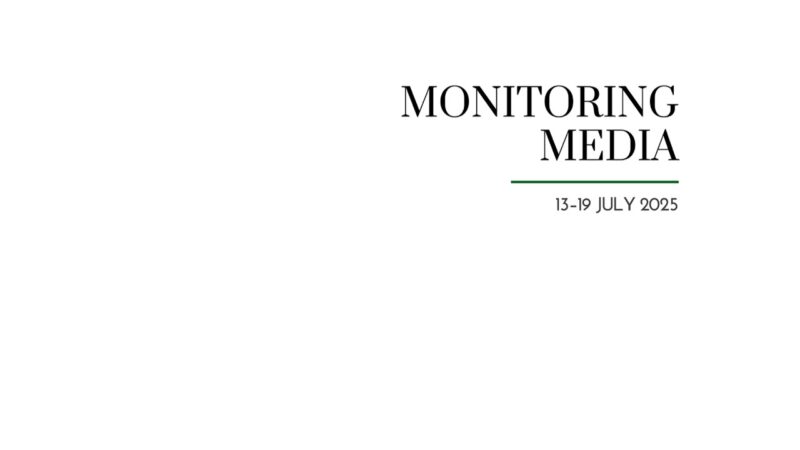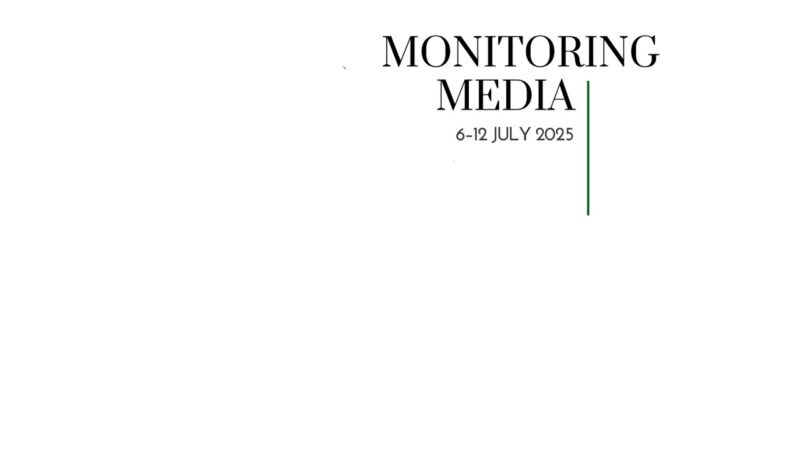Russo-Ukrainian war is a war of innovation
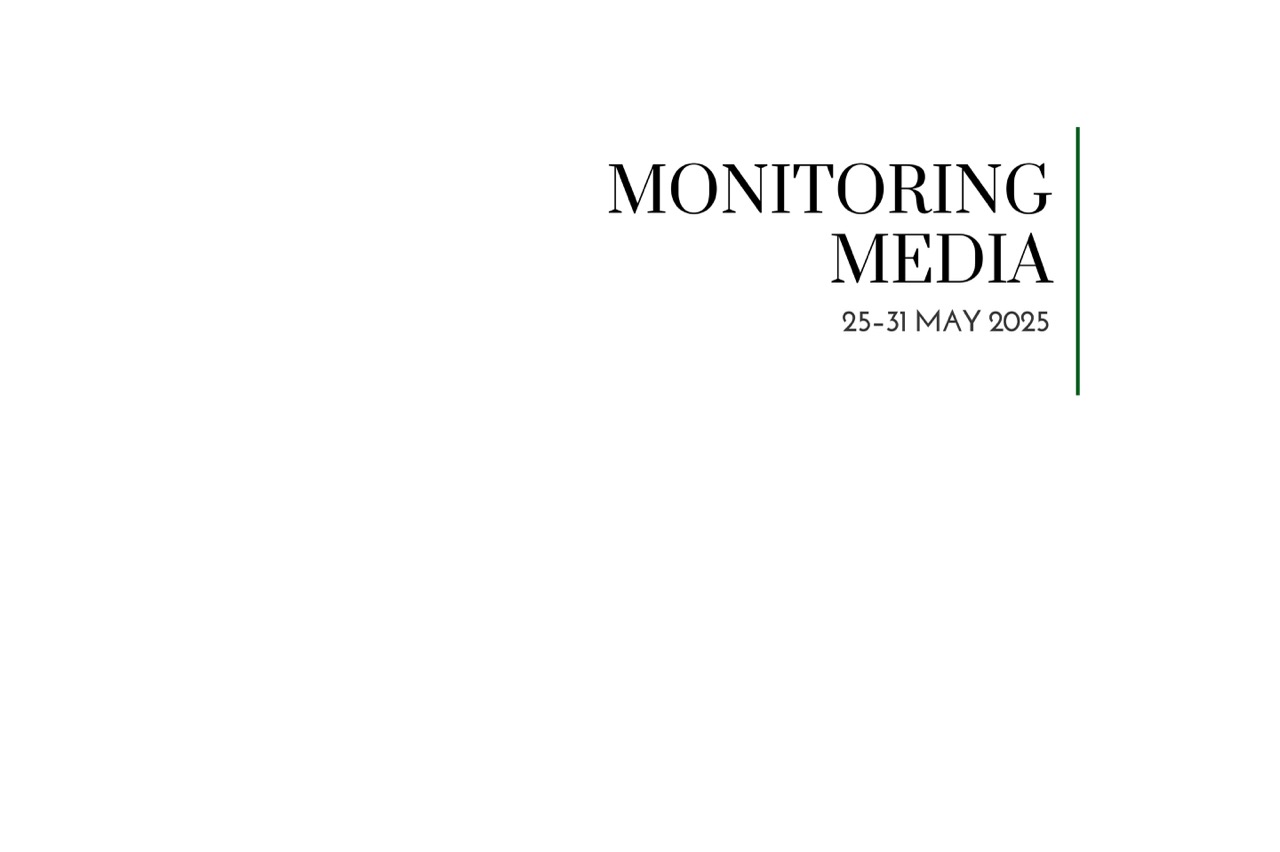
CIUS weekly report on North American media coverage of Ukrainian affairs, 25–31 May 2025
Four publications (The Atlantic, The Washington Post, The National Interest, and The Globe and Mail) were selected to prepare this report on how Ukraine has been portrayed in the North American press during the past week. The sample was compiled based on their impact on public opinion as well as on their professional reputation, popularity among the readership, and topical relevance. These publications represent centrist viewpoints on the political spectrum.
This MMS report covers only the most-read and relevant articles about Ukraine, as ranked by the respective North American publications themselves in the past week. Its scope covers promoted articles on home pages and articles from special sections on Ukraine, with the hashtag #Ukraine, from the paper editions of the publications, and about Ukraine from opinion columns and editorials.
Featured topics
- The world and Ukraine: the Russo-Ukrainian war is a war of innovation.
- Russia at war: the US needs a ‘double Kissinger’; White House statements have no influence on the Kremlin; Congress may give White House leverage over the Kremlin.
MMS summaries
The US needs a ‘double Kissinger’. Lyle J. Goldstein (National Interest) argues that instead of trying to prioritize deterring China over Russia, the Trump administration should consider reducing tensions with both states. President Trump has made numerous attempts to normalize relations with Russia, sometimes at Ukraine’s expense, with the aim of distancing Moscow from Beijing. However, the “reverse Kissinger” approach has many problems, not least in terms of its long-term viability. It is also unlikely that Russia is willing to turn away from China. A smarter strategy would be to use a “double Kissinger” approach, i.e., simultaneously improving relations with both Moscow and Beijing, which would likely lead to a rift between the two powers. According to Goldstein, “A ‘double Kissinger’ strategy could help usher in a new, stabler world order. Progress within such an order can be imagined on numerous fronts, not least to include nuclear arms control, non-proliferation, and regional security. Overall, this approach would allow for a much-needed decrease in global tensions, allowing an appropriate return to focusing on economic and environmental challenges.”
Russo-Ukrainian war is a war of innovation. Nataliya Gumenyuk (Atlantic) argues that American weapons are important, but it is Ukrainian drones that are now shaping the landscape of the Russo-Ukrainian war. During the three-plus years of full-scale Russian aggression against Ukraine, the Armed Forces of Ukraine have gone from defending themselves with Soviet-era weapons to adapting and developing new forms of warfare. At the beginning of the invasion, tanks were the main weapon. Later, modern weapons were provided to Ukraine by its allies, including limited numbers of HIMARS rocket systems and ATACMS long-range missiles. However, US weapons are no longer a key factor determining the nature of this modern war: “Drones now guide artillery, deliver payloads, resupply units, and even map out minefields. They’re fast, cheap, adaptable—and built right at home. Brigades across the front use them daily, and unlike tanks or long-range missiles, these systems can be updated weekly to meet changing battlefield demands. They are what’s keeping Ukraine in the fight—and they may just be changing the face of warfare more generally.” According to Gumenyuk, “What’s keeping Ukraine in the fight is not Russian mercy, or even solely American arms: It’s innovation.”
White House statements have no influence on the Kremlin. Tom Nichols (Atlantic) declares that President Trump’s “threatening” statements on social media have no influence on the Kremlin. Moscow dismissively characterizes these statements as “emotional overload” on the part of the US president. According to the author, “Putin didn’t care then, and he won’t care now.” He has not changed, but what has changed is that President Putin’s behaviour is now a problem for President Trump, who has trapped himself with his own statements: “The Russian president played along with Trump, as he has for years, because it is in Russia’s interest to have an anti-American, anti-democratic force of chaos in the Oval Office, but none of that meant that Putin was going to stop the war.” The present White House’s statements expressing disappointment with the Kremlin are a positive sign: “Trump has added Putin to the list of people responsible for the war, not because he has had an epiphany, but because (at least to judge by his message) he is, as usual, desperate to escape responsibility for his own failure to live up to his promises.” The main question is whether Washington will follow through on his threats or whether they will remain empty words. According to Nichols, “Trump’s election was, for Russia, a lucky break, a breather when the Kremlin needed it most. Nothing is going to change until Putin sees more costs for his actions—and the president stamping his feet on social media doesn’t count.”
Congress may give the White House leverage over the Kremlin. Marc A. Thiessen (Washington Post) opines that the bipartisan sanctions bill will give President Trump significant leverage to force Russia to end its war against Ukraine. The Sanctioning Russia Act will deprive Moscow of a source of income for financing its military machine: “This legislation would shut off the most important source of cash for the Kremlin by barring energy transactions with sanctioned Russian banks (which President Joe Biden allowed to continue), and imposing a 500 percent secondary tariff on any country that purchases Russian-origin uranium, oil, natural gas, petroleum, or petroleum products and petrochemical products.” This move will provide President Trump with strong bipartisan support in his pressure on the Kremlin: “Signing the bill does not mean Trump has to implement the sanctions immediately. The proposed sanctions take effect only after the president issues a formal determination that Putin is engaging in sanctionable acts as described in the bill, such as ‘refusing to negotiate a peace agreement with Ukraine.’” Congress could strengthen President Trump’s position by adding a provision to the sanctions legislation that would authorize the sale of US weapons to Ukraine, “using Foreign Military Financing (FMF) direct loans, like those we provide to our allies and partners around the world.” According to Thiessen, “This would dramatically increase Trump’s leverage with Putin, giving him a sword of Damocles to hang over the Russian leader’s head—backed by an overwhelming, bipartisan majority in Congress. It would empower Trump and strengthen his hand in the negotiations, by giving him the power to inflict crippling sanctions against Russia at a moment of his choosing. And it will underscore that the United States is united politically with Trump in backing the approach.”
Trump’s patience with Putin wears thin as peace talks stall. Jonathan Lemire and Ashley Parker (Atlantic) examine the growing tension between Donald Trump and Vladimir Putin, highlighting a shift in what was once portrayed as a durable albeit controversial political relationship. Initially fueled by admiration—Trump once tweeted in 2013 asking if Putin would attend his pageant and “become my new best friend”—this dynamic is now showing visible cracks. Trump is reportedly frustrated with Putin’s refusal to commit to a ceasefire in Ukraine and has “expressed rare public anger at the Russian leader,” even considering new sanctions to force Moscow to commit to the negotiations. According to Trump’s advisers, he feels “humiliated that Putin is […] ‘tapping him along,’” and is unsettled by what he perceives as a reversal of Russian cooperation. Lemire and Parker also note Trump’s conflicting impulses: his desire for a quick diplomatic victory and his longstanding reluctance to confront Putin meaningfully. While he has privately explored sanctions, Trump is delaying related decisions, saying he would wait “two weeks” before acting. This indecision, the authors warn, risks emboldening Russia, especially as Putin escalates illegal and destructive attacks on Ukrainian cities. “He’s genuinely frustrated that he thought Putin was in a place to have meaningful dialogue and seems to have reversed course,” a source familiar with the talks said. Nonetheless, Trump’s administration has not committed to participating in the next round of negotiations in Istanbul, a signal that the US may be stepping back, further weakening its leverage. At the same time, Trump’s failure to follow through with pressure on Putin could dramatically reshape the course of the war. Should the US halt intelligence sharing or military aid, “Europe would bear more of the responsibility for supplying Ukraine with weapons and guaranteeing its security,” despite being unable to match American capacity. Critics argue that Trump’s posture has already damaged America’s credibility, with Rebecca Lissner noting: “This is hardly the art of the deal—effectively telling Putin that if he doesn’t engage in serious negotiations, he will suffer no costs and get everything he wants.” Ultimately, Trump’s hesitation looks less as strategic patience than as a geopolitical liability that may ultimately serve Russian interests.
Russia trains abducted Ukrainian youth to fight against their own. Mark MacKinnon (Globe and Mail) reports on Russia’s operation of a vast, coordinated network of detention facilities aimed at indoctrinating and militarizing abducted Ukrainian children, according to an investigation by Globe and Mail based on data from Hala Systems (a Lisbon-based tech firm funded by a $2m grant from Global Affairs Canada). The mapping, developed in partnership with the Ukrainian NGO Save Ukraine, identifies 136 facilities—including former schools, camps, and orphanages—stretching from the occupied territories to Siberia. Hala has confirmed that at least six sites are being used by Russia’s Yunarmiya (Youth Army), which it describes as centres of military training and ideological programming. “We have seen some children as young as eight that are being sent into very structured military patriotic programs,” said Ashley Jordana, Hala’s director of law, policy, and human rights. Analysts warn that this constitutes a violation of international law, particularly the Geneva Conventions, which prohibit the unlawful conscription of civilians and the use of child soldiers. Beyond mapping the scale of abduction, MacKinnon highlights how emerging technologies are transforming Hala’s documentation and accountability efforts in real time. Using satellite imagery, mobile phone tracking, and intercepted communications, Hala has assisted in the recovery of 129 children, also feeding intelligence to Ukrainian prosecutors and the International Criminal Court. “The information gets sent to the regional prosecutors, the Office of the Prosecutor General, to the ICC, and National Police of Ukraine,” according to Jordana. The urgency of this work is compounded by geopolitical shifts: US funding for a parallel Yale University project that tracks illegally adopted Ukrainian children was recently cut, prompting Save Ukraine’s Mykola Kuleba (former Ukrainian Foreign Affairs Minister) to warn that it “sent a dangerous message that the U.S. government no longer cared about the fate of those children.” As Canada’s support is also set to expire in September, the author notes the growing risk of impunity and the critical role of sustained international backing in what Kuleba calls “a war for our children.”
[Ukraine has documented over 19,500 cases of children who were forcibly taken to Russia, Belarus, and occupied territories since the beginning of the full-scale invasion in February 2022. According to official figures, only about 1,300 of them have been brought back to areas under Ukrainian control—MMS]
